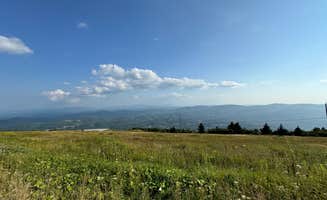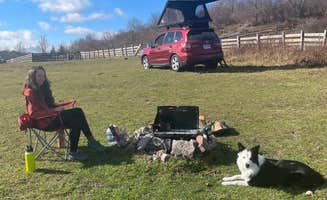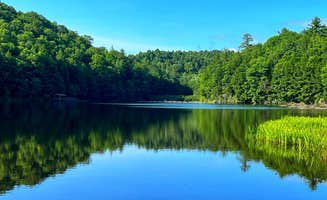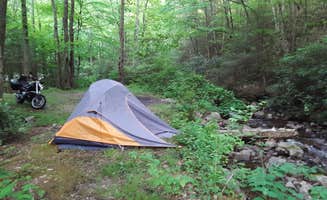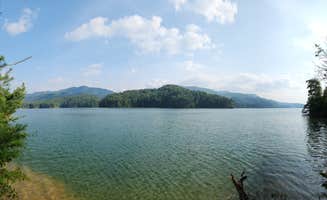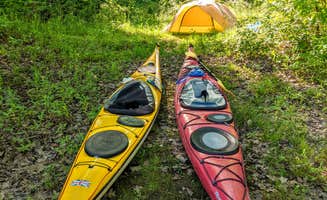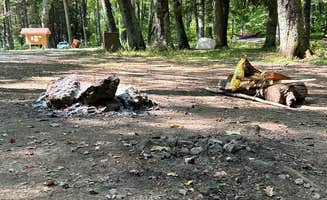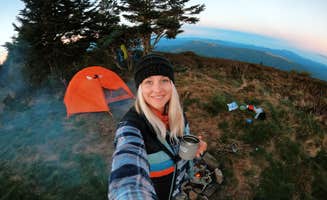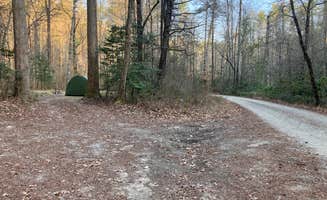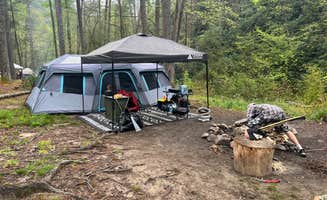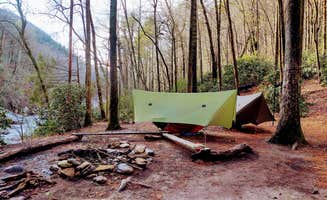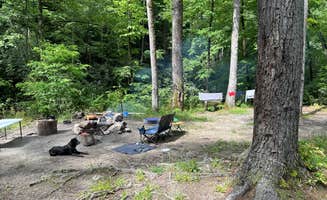Dispersed camping areas near Lansing, North Carolina offer free primitive camping throughout the surrounding forests at elevations between 2,800-5,700 feet. The region's terrain features steep mountain roads with multiple stream crossings and rocky sections that can become muddy after rainfall. Weather conditions vary significantly with elevation, with summer temperatures typically 10-15 degrees cooler at higher elevations compared to valley locations.
What to do
Hike to elevated viewpoints: Whitetop Mountain provides panoramic vistas above the clouds at 5,520 feet elevation. A camper reported, "We mainly wanted a quiet place to sleep and gorgeous morning views, and we got both!" The mountain offers excellent sunrise viewing opportunities with visibility extending across three states on clear days.
Waterfall exploration: Several accessible waterfalls dot the region near Little Tumbling Creek, where creekside campsites provide both recreation and water sources. One visitor noted, "Waterfalls on way up and good fishing along the way in tumbling creek. Flat field area for camping on way."
Star observation: The higher elevation sites offer exceptional night sky viewing due to minimal light pollution. At Whitetop, a camper explained, "Watching the sunset was spectacular, then being able to star gaze," making it an ideal location for astrophotography and constellation spotting during clear nights.
What campers like
Creek sounds: Many dispersed sites sit adjacent to running water, providing both ambient noise and practical benefits. At Upper Creek, Pisgah National Forest, campers appreciate "spent two nights here at a site right next to the creek, which was awesome listening to the running water as you fall asleep."
Wildlife encounters: The region hosts diverse wildlife including the famous wild ponies. At Scales Trailhead Basecamp, visitors enjoy "beautiful views, wild ponies, & it's (usually) relatively quiet!" The salt licks near the campsites attract ponies, creating unique viewing opportunities.
Cell service breaks: Many campers value the digital disconnection. One camper at Little Tumbling Creek noted it has "absolutely no verizon service at the site," while another camper at Washington & Jefferson National Forest mentioned a similar experience: "Absolutely no verizon service." This forces visitors to unplug completely from work and social media during their stays.
What you should know
Road condition challenges: Many access roads require specific vehicle capabilities. At Washington & Jefferson National Forest Dispersed Sites, a camper explained their experience: "Coordinates take you right to the site and there's a small gravel road you can pull into. The campsite is directly off the forest road, maybe 20 feet."
Weather preparation: Higher elevations experience severe wind conditions that affect camping comfort. One Whitetop visitor warned, "THE WIND IS KILLER. We ended up moving our tent to the other side of the car park at the top." Temperature changes can be dramatic, with another camper noting, "The reason I gave it two stars is because if there's any clouds in the sky, you're literally just in a cloud of condensation. Everything is wet."
Safety awareness: Some camping areas have reported concerning activity. A visitor to Washington & Jefferson National Forest shared: "We didn't think much at first, until we realized what they were doing in their car: It was a man and female. They appeared to be smoking meth and had a distinctive smell coming from their truck." Solo travelers should consider camping in more populated sites.
Tips for camping with families
Best first-timer sites: Washington & Jefferson National Forest offers sites that balance accessibility with the primitive camping experience. A reviewer noted, "Right next to the road, so first time campers would feel safe. The creek's sound is pleasant." These roadside sites provide quick exit options if weather turns unfavorable.
Educational wildlife spots: Mount Rogers National Recreation Area provides opportunities for children to see animals in their natural habitat. A visitor reported, "Amazing sights and wild ponies! The AT provides some great hiking." The area includes accessible trails suitable for different age groups.
Water access locations: Several sites offer safe creek access for children. At Upper Creek, one camper shared, "very nice and beautiful, camped right next to the upper creek," allowing for supervised water play and exploration opportunities during warmer months.
Tips from RVers
Alternative access routes: Some forest roads have difficult sections but alternative approaches exist. For RVs heading to Hidden Valley WMA, campers warn, "the road up is a pretty harsh grade for 4 miles. Our short bus Skoolie had some troubles with it," suggesting approaching from different directions when possible.
Site selection criteria: RVers should prioritize pull-through sites with adequate turning radius. One visitor to Hidden Valley WMA noted, "This spot is very nice, close to the water's edge (although no camping allowed lakeside). There's quite a few rings, bear bins, and a porta-loo." The presence of bear-proof storage and basic facilities makes this area more suitable for longer RV stays.
Resource management: Free camping near Lansing requires complete self-sufficiency. Many dispersed sites lack water and waste facilities, though some locations offer minimal infrastructure. A Hidden Valley visitor mentioned, "Porta Jon available at campground and boat dock. Plenty of dead wood for fires. Trash cans available." RVers should plan water usage carefully, bringing full tanks.


